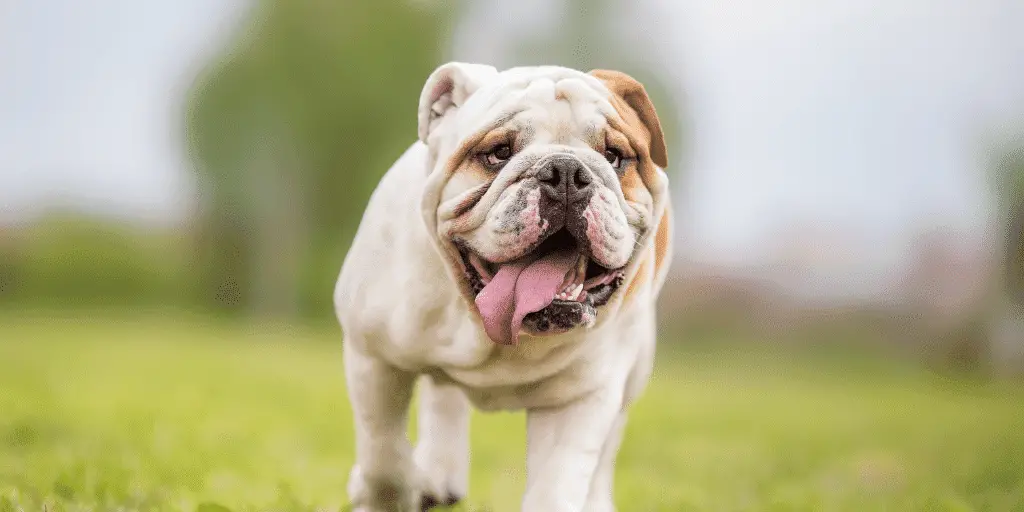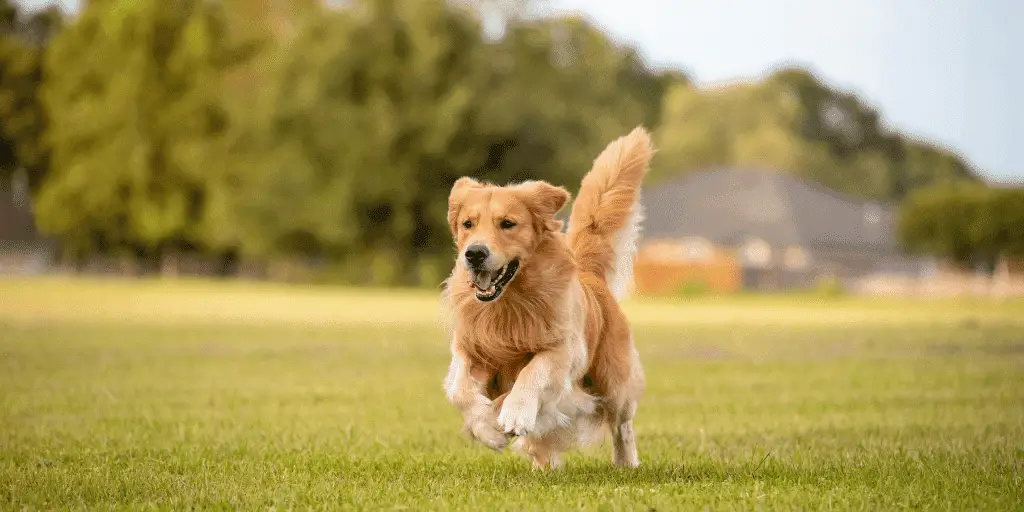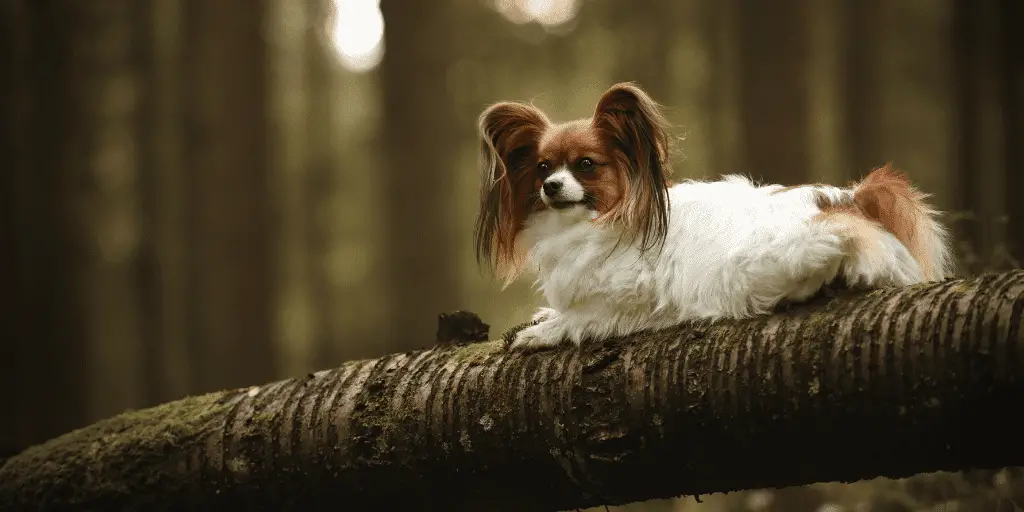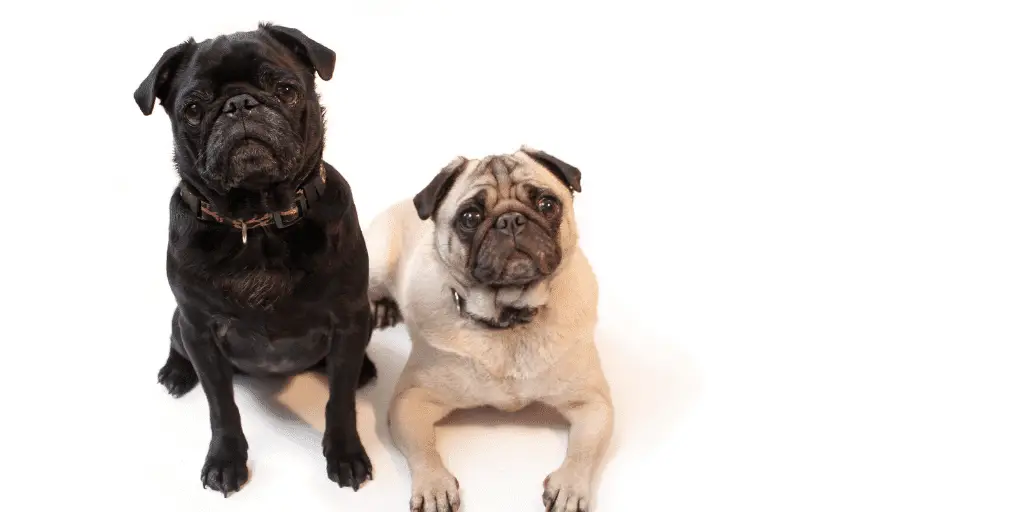Are you a pet parent navigating the delicate dance of introducing a new dog to your resident cat? Discovering the right canine companion that will mesh with your feline’s temperament is crucial for a harmonious home.
Our article unveils the top dog breeds renowned for their cat-friendly nature, offering insights that will guide you toward fostering a peaceful, interspecies household.
Key Takeaways:
- Basset Hounds are well-suited to living with cats due to their calm and patient nature, stemming from their history as scent hounds bred for endurance rather than speed, making them less likely to chase after feline companions.
- Beagles’ sociable and cooperative traits, a result of their pack-hunting background, often translate into a strong ability to bond with cats, though their high energy levels require appropriate channeling to ensure peaceful cohabitation.
- Bulldogs, once bred for bull-baiting, have evolved into affectionate and gentle pets with a laid-back demeanor that typically allows them to coexist with cats without engaging in aggressive play, despite their muscular build.
- Cavalier King Charles Spaniels, historically royal lap dogs, exhibit an affectionate and gentle demeanor towards all family members, including cats, and their need for companionship often leads to them viewing cats as friends rather than competitors.
- Collies, known for their herding skills and gentle disposition, are predisposed to protecting and watching over all family members, including cats, and their intelligence and trainability make them adept at learning how to interact safely with feline friends.
List of Dog Breeds That Are Good With Cats
Basset Hounds, Beagles, Bulldogs, Cavalier King Charles Spaniels, Collies, Golden Retrievers, Labrador Retrievers, Papillons, and Pugs are good with cats.
| Breed | Key Traits | Compatibility with Cats | Training and Socialization | Health Considerations |
| Basset Hounds | Calm, patient, amiable disposition. Large pupils and high proportion of rod cells for scent tracking. | Excellent, due to low energy levels and lack of prey drive. | Early socialization with cats recommended. Positive reinforcement to encourage peaceful coexistence. | Prone to ear infections and hip dysplasia. Regular check-ups are important. |
| Beagles | Sociable, cooperative, high energy, and playfulness. Bred for stamina in pack hunts. | Very good, as they view cats as part of their pack. | Training to manage their strong scent drive and prevent chasing. Consistent commands and positive reinforcement. | Vigilance for signs of obesity and exercise to manage energy levels. |
| Bulldogs | Affectionate, gentle, low energy. Historically bred for bull-baiting, now evolved into friendly companions. | High, their laid-back nature minimizes aggressive play. | Gradual and supervised introductions. Environmental management for peaceful coexistence. | Watch for respiratory issues and overheating due to their brachycephalic nature. |
| Cavalier King Charles Spaniels | Affectionate, gentle, adaptable. Historically favored by British royalty. | Excellent, especially if they view the cat as another friend. | Early socialization and positive interactions are key. Gentle training methods are effective. | Monitor for heart conditions and syringomyelia; regular veterinary care recommended. |
| Collies | Intelligent, protective, herding background. Loyal and family-oriented. | Very good, tend to be gentle and protective of cats. | Focus on managing herding instincts to prevent cat herding. Reward-based training for coexistence. | Regular exercise is crucial; watch for herding behavior that might stress cats. |
| Golden Retrievers | Friendly, tolerant, bred for retrieving. Loves interaction and is sociable with other animals. | Excellent, due to innate patience and gentle approach. | Training for respectful interaction with cats. Socialization from an early age beneficial. | Ensure sufficient exercise to maintain temperament and manage energy. |
| Labrador Retrievers | Friendly, outgoing, cooperative. Originated as fishing aids, now excellent family pets. | High, sociable demeanor reduces prey drive towards cats. | Guidance on gentle play and managing energy around cats. Early socialization recommended. | Regular physical activity needed; monitor for hip dysplasia and obesity. |
| Papillons | High intelligence, curiosity, regal appearance. Energetic and playful. | Good, if cat shares similar energy levels. Supervised play is beneficial. | Adaptability makes them respectful of cats’ space. Training to foster investigative interactions. | Provide mental and physical stimulation to prevent boredom and encourage positive behavior. |
| Pugs | Sociable, affectionate, playful yet calm. Cherished by ancient Chinese nobility. | Excellent, their calm demeanor and craving for attention make them great companions. | Gradual introductions and creating shared positive experiences help forge bonds. | Create a safe environment, especially in hot weather due to breathing difficulties. |
1. Basset Hounds

Basset Hounds, with their distinctive long ears and droopy eyes, have a history that takes us back to France, where they were bred as scent hounds. Originally used for hunting due to their exceptional sense of smell, Basset Hounds have evolved into gentle companions that fit well into the family setting, including those with feline members.
A Brief History of the Breed
The Basset Hound’s lineage as a scent hound has shaped its personality. These dogs were designed to follow a trail with endurance, not speed, which translates into a more laid-back attitude at home.
This calm demeanor is one of the reasons they are such a good match for households with cats. They’re less inclined to engage in a high-speed chase, preferring to coexist peacefully with their feline housemates.
Calm and Friendly Nature
Basset Hounds are known for their patience and amiable disposition. Their low energy levels mean they are less likely to view the family cat as prey or a target for a chase. Instead, they’re more interested in lounging around and enjoying the company of their family, regardless of species.
Social Needs and Attachment
These dogs are social creatures that form strong bonds with their human families and can do so with cats as well, especially if introduced to them early on. Early socialization with cats can help ensure that the Basset Hound grows up understanding that the cat is part of the pack, not something to be chased or bullied.
Training and Stubbornness
While Basset Hounds can be a bit stubborn, with the right approach, they can be trained to live harmoniously with cats. Positive reinforcement techniques, such as treats and praise, work well to encourage good behavior around other pets. Consistency is key, as is patience, given their sometimes obstinate nature.
Health Issues and Interaction with Pets
Basset Hounds are generally healthy, but they can be prone to certain conditions like ear infections and hip dysplasia. These health issues can sometimes affect their interaction with other pets, as a dog in discomfort may be less tolerant. Regular check-ups and prompt attention to any health concerns can help maintain the peace at home.
Owners of Basset Hounds often share heartwarming stories of their dogs cuddling up with their cats, proving that with the right breed and proper introduction, a dog and cat can be the best of friends.
2. Beagles

Beagles are a breed with a storied history, originally bred for their keen sense of smell and stamina in pack hunts. This background has given them a sociable and cooperative nature, making them not just excellent hunting companions but also friendly and outgoing pets. Their pack mentality often translates into a strong ability to get along with other animals, including cats.
Sociable Nature and Compatibility with Cats
The Beagle’s sociable nature is a cornerstone of their personality. They thrive on companionship, whether it’s with humans or other animals.
This need for interaction often makes them more open to forming bonds with cats. Unlike more solitary dog breeds, Beagles are more likely to view cats as part of their pack and treat them as such, which can lead to a harmonious coexistence.
Energy Levels and Playfulness
Beagles are known for their high energy levels and playfulness. They require regular exercise and mental stimulation to keep them happy and well-behaved. In a household with cats, it’s important to channel this energy in positive ways.
Engaging in interactive play sessions and providing plenty of toys can help keep a Beagle entertained and less likely to bother their feline housemates out of boredom or excess energy.
Training Challenges and Strategies
Training a Beagle can come with its challenges, particularly due to their tendency to follow their noses. This can sometimes lead to unwanted chasing behavior, especially if a cat runs or acts as prey.
Teaching commands like “leave it” is crucial in preventing these instincts from taking over. Consistent training and positive reinforcement can help a Beagle learn to coexist peacefully with cats.
Expert Opinions and Introduction Tips
Experts often note the Beagle’s adaptability as a key factor in their ability to live with cats. Gradual introductions, where the dog and cat can slowly get used to each other’s presence, are usually recommended. Allowing them to interact under supervision until trust is built can pave the way for a lasting friendship.
3. Bulldogs

Bulldogs, with their distinctive, wrinkled faces and stocky builds, are a breed that has undergone a remarkable transformation over the centuries. Originally bred for the brutal sport of bull-baiting, these dogs were valued for their tenacity and strength.
However, as the times changed and such sports were rightfully outlawed, the Bulldog evolved too. Today’s Bulldog is a far cry from its fierce ancestors; they have become one of the most affectionate and gentle breeds, making them excellent companions not just for humans but for other pets, including cats.
Bulldog’s Temperament and Compatibility with Cats
The Bulldog’s temperament is one of its most endearing qualities. Known for being calm and friendly, Bulldogs are not as high-energy as other breeds, which means they are less likely to engage in aggressive play.
This laid-back nature is one of the reasons they can get along so well with cats. They are more inclined to relax beside their feline friends rather than chase them around. Bulldogs also have a strong desire for human companionship, which can help them accept a cat as part of their pack and foster a peaceful coexistence.
Physical Characteristics and Health Concerns
Physically, Bulldogs are medium-sized with a heavy, muscular frame. Their low-to-the-ground stature means they aren’t as nimble or quick as other breeds, which is another reason they’re less threatening to cats. However, their physical makeup does come with some health concerns.
Bulldogs are known for their respiratory issues due to their brachycephalic (flat-faced) nature, which can limit their ability to engage in prolonged physical activity. This can actually be a positive when it comes to living with cats, as Bulldogs are less likely to engage in high-energy play that could intimidate or harm their feline housemates.
Creating a Harmonious Household
To ensure a harmonious household, it’s important to manage the Bulldog’s environment. Providing separate, comfortable spaces for both the dog and the cat can help each pet feel secure. It’s also crucial to introduce them to each other slowly and under controlled circumstances.
Many Bulldog owners have found success by gradually increasing the pets’ exposure to one another, always supervising their interactions until they are sure both animals are comfortable.
Anecdotes from Bulldog owners often highlight the breed’s surprising gentleness with cats. For instance, some owners have shared stories of their Bulldogs lying contentedly as their cat companions curl up beside them.
The key to these successful relationships seems to be patience, proper introductions, and an understanding of the Bulldog’s personality and needs.
4. Cavalier King Charles Spaniels

The Cavalier King Charles Spaniel, with its illustrious history as a favored lap dog of British royalty, is more than just a pretty face with a regal lineage. This breed’s development has centered around companionship, which is a trait that extends to their interactions with other animals, including cats.
Affectionate Nature and Gentle Demeanor
Cavalier King Charles Spaniels are the epitome of affection. Their gentle demeanor is not just reserved for humans; these dogs are also known to show a great deal of kindness towards their feline housemates.
Their adaptability is a bonus, allowing them to fit seamlessly into a household with cats. They are not known to be aggressive, which is a significant plus when introducing them to a cat.
Social Needs and Companionship
Cavaliers thrive on companionship. They are not the type to enjoy solitude, preferring instead to be in the company of others, whether it’s their human family members or other pets.
This need for constant companionship means they are often more accepting of a cat as part of their social circle. They are likely to view the cat as another friend rather than a competitor for attention.
Playfulness and Energy Levels
Despite their laid-back nature, Cavaliers do possess a playful side and moderate energy levels. They enjoy a good game and can be quite entertaining playmates for cats, provided the play is supervised initially to ensure it’s gentle and stress-free.
It’s important to manage their interactions, especially in the beginning, to make sure both the dog and the cat feel safe and comfortable with each other.
Health Considerations
When considering a Cavalier King Charles Spaniel as a companion for your cat, it’s important to be aware of the breed’s health issues, such as heart conditions and syringomyelia, which could affect their energy levels and ability to engage with a cat.
Regular check-ups and being attentive to the dog’s health will help ensure a harmonious relationship between your pets.
Real-world anecdotes often paint a picture of Cavaliers living blissfully with cats. Owners suggest that a smooth introduction is key. Allow the cat and dog to have their own space and gradually introduce them to each other’s presence.
With patience and careful management, Cavaliers can form fast friendships with cats, often becoming inseparable companions.
5. Collies

Collies are a breed renowned for their herding prowess and gentle disposition, making them one of the more suitable dog breeds for households with cats. Let’s delve into the characteristics that make Collies great companions for their feline counterparts.
Overview of the Breed’s History
Originally bred as herding dogs, Collies have a rich history of working closely with humans to guide and protect livestock. This instinctual behavior translates into their home life, where they often exhibit a natural inclination to watch over all members of their family, including cats.
Their herding heritage means they’re used to working with other animals and are less likely to view cats as prey.
Intelligence and Trainability
Collies are exceptionally intelligent and eager to please, which makes them highly trainable. This intelligence can be harnessed to teach them how to interact safely and respectfully with cats. With consistent training, Collies can learn to understand the boundaries set by their feline friends, ensuring a harmonious coexistence.
Protective Nature
The protective nature of Collies often means they will extend their guardianship to the cats in their family. They can be taught to recognize cats as part of their pack, which helps in creating a secure environment where cats feel safe and unthreatened.
Exercise Needs
Collies are energetic and require regular exercise to maintain their health and happiness. Meeting their exercise needs is crucial as a well-exercised Collie is less likely to bother a cat. Engaging activities like agility training or long walks can help burn off excess energy and keep the peace at home.
Socialization and Training Techniques
Early socialization and exposure to cats can help Collies learn to be calm and gentle around them. Training techniques that reinforce positive behavior when interacting with cats are essential. Reward-based training encourages Collies to be friendly and patient with their feline housemates.
Stories from Collie Owners
Many Collie owners have successfully introduced their dogs to cats. These stories often highlight the patience required during the introduction process but also the rewarding nature of the relationship that can develop. Collies can become protective and affectionate companions to cats, showcasing the breed’s capacity for interspecies friendship.
6. Golden Retrievers

Golden Retrievers are often the gold standard for family pets, and their compatibility with cats is no exception. Originating in the Scottish Highlands during the 19th century, these dogs were bred to retrieve game in both water and on land.
This history has endowed them with a friendly and tolerant nature, making them excellent companions not just for humans but for other animals as well.
A Breed Built for Companionship
The Golden Retriever’s development as a hunting and retrieving dog has ingrained in them a love for interaction and a disposition that is both sociable and accommodating.
Their innate patience and gentle approach make them one of the best dog breeds for households with cats. They are not just playful but also exhibit a demeanor that is considerate of their feline housemates.
Intelligence and Trainability
Golden Retrievers shine with their high intelligence and an eagerness to please that makes them highly trainable. This intelligence, coupled with their desire for approval, allows them to quickly learn how to interact with cats in a respectful and gentle manner.
Training them to coexist peacefully with cats can be a rewarding experience, as they respond well to positive reinforcement and consistent guidance.
The Importance of Exercise
A well-exercised Golden Retriever is a content and calm companion. These dogs require regular physical activity and mental stimulation to maintain their even temperament. Ensuring they have enough exercise can significantly reduce any overexcited behavior that might overwhelm their feline friends.
Building Bonds with Feline Friends
Experts often note that Golden Retrievers have a remarkable capacity to form strong bonds with both humans and other animals. Their affable nature extends to cats, and with proper introductions and training, they can become fast friends.
Success stories abound of Golden Retrievers who have become protective and affectionate siblings to their cat counterparts, showcasing the breed’s ability to integrate seamlessly into a multi-pet household.
7. Labrador Retrievers

Labrador Retrievers, often simply called Labs, are one of the most beloved dog breeds around the world, and their amiable disposition makes them excellent companions, not just for humans but for cats as well.
Originating from Newfoundland, not Labrador as their name might suggest, these dogs were bred to help fishermen haul nets and catch fish that escaped from fishing lines. This historical partnership with humans has fostered a breed that is friendly, outgoing, and cooperative.
Friendly and Outgoing Nature
Labs are known for their friendly and outgoing nature. They are the type of dogs that will greet you with a wagging tail and a happy face after a long day. This same warmth extends to other animals, including cats.
Their sociable demeanor means they are less likely to view a cat as prey and more as a potential friend. This is a big plus for families looking to add a dog to a home that already has a feline member.
Boundless Energy and Love for People
The boundless energy of Labrador Retrievers can be a double-edged sword. On one hand, it means they are always up for play and exercise, which can be great for active cats that enjoy a bit of rough and tumble.
On the other hand, their boisterous play must be managed to ensure they don’t accidentally harm their smaller feline friends. Labs adore people, and this love often extends to other household pets, but they do need guidance to understand the right way to interact with them.
Gentle Temperament and Training
Despite their size and energy, Labs have a gentle temperament, which is crucial when interacting with cats. They are not typically aggressive and can be taught to be even more gentle with proper training.
Early socialization is key; introducing a Lab to a variety of animals, including cats, at a young age can help them understand how to coexist peacefully. Consistent training is also essential to teach Labs the appropriate way to behave around smaller animals.
Health and Exercise Needs
Labrador Retrievers are generally healthy, but like all breeds, they have their share of health concerns, such as hip dysplasia and obesity. A healthy diet and regular exercise are important to keep a Lab in top shape. When living with cats, it’s important to ensure that the Lab gets enough physical activity to satisfy their high energy levels without overwhelming their feline housemates.
8. Papillons

Papillons are one of those enchanting dog breeds that can capture the heart of a cat lover with their butterfly-like ears and dainty, yet spirited demeanor.
With a history that dates back to the courts of Europe, where they were cherished by nobility, these small dogs carry a regal air with a dash of playfulness that cats often find intriguing.
History and Distinctive Features
The Papillon, French for “butterfly,” owes its name to its distinctive, large, and fringed ears that resemble the wings of a butterfly. This breed has graced the laps of royalty and has been depicted in historical paintings alongside their aristocratic owners.
Their fine-boned structure and elegant coat add to their noble appearance, making them a visually appealing companion for both humans and feline friends.
Intelligence and Curiosity
Papillons are not just pretty faces; they are renowned for their high intelligence and curiosity. These traits make them quick learners and adaptable companions, which is beneficial when introducing them to a household with cats.
Their inquisitive nature can lead to gentle, investigative interactions with cats, often leading to a fascinating game of chase or hide-and-seek that is entertaining for both species.
Energetic Personality and Playfulness
Despite their small stature, Papillons are full of energy and have a zest for life that can be quite infectious. Their playful antics are often well-received by cats, especially if the cat has a similar level of energy and playfulness.
It’s important to supervise their playtime to ensure it remains friendly and to step in if either pet becomes overwhelmed.
Adaptability and Respect for Boundaries
Papillons are surprisingly adaptable for such a small breed. They can be respectful of a cat’s personal space and are usually adept at picking up on social cues from their feline housemates. This sensitivity helps in preventing conflicts and promotes a peaceful coexistence.
Mental and Physical Stimulation
To keep a Papillon’s active mind engaged and prevent boredom, it’s essential to provide plenty of mental and physical stimulation. This can include interactive toys, puzzle feeders, and regular play sessions. A well-stimulated Papillon is more likely to be a well-behaved companion for your cat.
Insights from Papillon Owners
Owners of Papillons often share heartwarming stories of their dogs forming close bonds with their cats. They speak of the joy and companionship that both pets bring into the household, creating a dynamic and loving environment.
With the right introduction and ongoing positive interactions, Papillons and cats can become the best of friends, proving that size doesn’t matter when it comes to a big heart and the capacity to love.
9. Pugs

Breed History and Sociable Nature
Pugs have a storied past that dates back to ancient China, where they were cherished by emperors and nobility as lap dogs. This privileged position in society allowed them to develop a close bond with humans, nurturing a sociable and affectionate nature that persists to this day.
Their history as companions to the elite has ingrained in them a love for relaxation and comfort, making them perfect pals for both people and pets, including the independent feline members of the household.
Playful Yet Calm Demeanor
Despite their small size, Pugs pack a lot of personality. They are known for their playful antics that can bring a smile to anyone’s face. However, they also possess a calm and even-tempered disposition that makes them excellent housemates for cats.
Pugs crave human attention and are happiest when they’re part of the family’s daily activities, which often includes snuggling up with a purring cat.
Adaptability and Exercise Needs
Pugs are incredibly adaptable and can thrive in various living situations, from spacious houses to cozy apartments. Their exercise needs are relatively low compared to more active breeds, which aligns well with the lifestyle of less active cats.
A few short walks and some playtime are sufficient to keep a Pug healthy and content, ensuring they don’t overwhelm their feline companions with excessive energy.
Health Concerns and Comfortable Environments
While Pugs are generally robust little dogs, they do have some breed-specific health concerns, particularly regarding their breathing. Their short snouts can lead to difficulties, especially in hot or humid weather.
It’s important to create a living environment that is safe and comfortable for both the Pug and cat, with plenty of cool, shaded areas and access to water.
Personal Stories of Pug and Cat Friendships
Many Pug owners have heartwarming tales of introducing their Pug to a cat and the friendship that ensued. Techniques such as gradual introductions, supervised interactions, and creating shared positive experiences have helped forge peaceful coexistences.
The bonds that form between Pugs and cats can be incredibly strong, with many pets developing a sibling-like relationship that is a joy to witness.
Conclusion
In conclusion, the article has highlighted several dog breeds that are known for their compatibility with cats, including Basset Hounds, Beagles, Bulldogs, Cavalier King Charles Spaniels, Collies, Golden Retrievers, Labrador Retrievers, Papillons, and Pugs.
These breeds share traits such as a calm demeanor, sociability, and a non-aggressive nature, which make them suitable companions for feline friends.
Key factors in fostering a harmonious relationship between dogs and cats include proper introductions, consistent training, and understanding each breed’s specific needs and characteristics. With patience and the right approach, these dog breeds can form deep bonds with cats, leading to a peaceful and enriching coexistence for all members of the household.
Whether you’re looking for a laid-back Basset Hound or an energetic Golden Retriever, there’s a dog breed out there that can integrate well into a home with cats, creating a loving environment for everyone.








